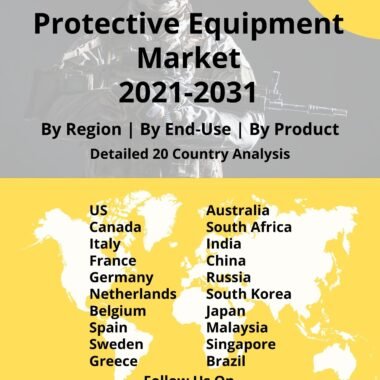Description
LEO And MEO Market
Frequently Asked Questions of Global LEO And MEO Market
LEO (Low Earth Orbit) and MEO (Medium Earth Orbit) are two categories of satellite orbits that play significant roles in satellite communication and other space-based applications.
Low Earth Orbit (LEO) Satellites
LEO satellites are positioned in orbits ranging from around 160 kilometers (100 miles) to approximately 2,000 kilometers (1,200 miles) above the Earth’s surface.
Altitude and Speed: LEO satellites typically operate at altitudes below 2,000 kilometers, and they travel at high speeds, completing an orbit around the Earth in around 90 to 120 minutes.
Advantages: LEO satellites offer several advantages, including low signal latency due to their proximity to Earth, high data rates, and better coverage in terms of global reach. They are particularly suitable for applications that require real-time communication, such as voice and video conferencing, remote sensing, and Earth observation.
Challenges: One challenge with LEO satellites is that they have a shorter coverage window as they quickly move across the sky. This requires a larger constellation of satellites to provide continuous coverage. Additionally, the design and operation of LEO satellite networks are more complex due to the need for seamless handovers between satellites as they pass over different ground stations.
Medium Earth Orbit (MEO) Satellites:
Orbit: MEO satellites are positioned in orbits typically ranging from around 2,000 kilometers (1,200 miles) to approximately 36,000 kilometers (22,000 miles) above the Earth’s surface.
Altitude and Speed: MEO satellites operate at altitudes higher than LEO satellites but lower than GEO (Geostationary Earth Orbit) satellites. They travel at intermediate speeds, taking several hours to complete an orbit.
Advantages: MEO satellites offer a balance between LEO and GEO satellites. They provide better coverage than GEO satellites, especially in terms of polar regions, and offer lower latency than GEO satellites. MEO satellites are commonly used for global positioning systems (GPS), navigation, and satellite-based communication services.
Challenges: MEO satellites require more complex tracking and positioning systems compared to GEO satellites. Their operational costs are higher due to the need for a larger number of satellites to achieve global coverage. However, they generally require less sophisticated ground equipment compared to GEO satellites.
Major factors LEO And MEO Market Growth
Both LEO and MEO satellite constellations have gained significant attention in recent years, driven by advancements in satellite technology and the demand for global connectivity. Companies like SpaceX’s Starlink and OneWeb are deploying large constellations of LEO satellites to provide global broadband internet coverage. On the other hand, MEO satellites, such as those used in GPS systems, offer reliable positioning and navigation services.
Trends influencing the LEO And MEO Market Size
LEO and MEO satellites have witnessed advancements in communication technology. Higher frequency bands, such as Ka-band and V-band, are being utilized to achieve higher data rates and increased capacity for broadband communication services. Additionally, advancements in phased array antennas and beamforming techniques enable satellites to dynamically steer and shape their communication beams, improving signal coverage and reducing interference.
Advancements in miniaturization and microelectronics have enabled the development of smaller and lighter satellites for LEO and MEO orbits. These small satellites, often referred to as nanosatellites or CubeSats, have significantly reduced the cost of satellite deployment and allow for larger constellations. They leverage off-the-shelf components and advanced electronics to deliver cost-effective solutions with improved capabilities.
LEO And MEO Market Forecast & Dynamics
Advancements in LEO and MEO satellite systems have revolutionized global connectivity, communication services, and Earth observation capabilities. They have made satellite-based services more accessible, affordable, and efficient, opening up new opportunities in areas such as telecommunications, internet connectivity, remote sensing, and scientific research. Continued research and development in satellite technology are expected to drive further advancements, leading to even more capable and cost-effective LEO and MEO satellite systems in the future.
The market forecast encompasses a thorough market analysis and assessment of market size. The analysis comprises an evaluation of regional market size, factors driving growth, constraints, and potential opportunities. Furthermore, the regional analysis also includes an examination of the market size specific to each country.
LEO And MEO Market Analysis for Recent Developments
Telstra, one of Asia’s largest telecoms, is eager to strengthen its ties with the satellite industry as it prepares to accept new satellite technology in the coming years. Telstra’s Commercial Engineering executive, Sri Amirthalingam, told Via Satellite that the company has been excited to see the new Low-Earth Orbit and Medium-Earth Orbit technologies and constellations come to fruition during the previous two to three years. Telstra announced an agreement with OneWeb earlier this year to investigate innovative options for greater digital connection across Australia and the Asia Pacific region. The collaboration compliments Telstra’s T25 objective to expand and extend its network leadership position while also increasing mobile coverage across the country.
As low-earth orbit (LEO) satellite network operators worldwide step up satellite launches, Taiwan-based suppliers of LEO components are waiting for a new wave of relevant orders. Sources in the supply chain have already noted an increase in inquiries, beginning in 2023. In terms of volume, Taiwan-based suppliers mainly depend on the orders from Starlink, since satellite launches from other players remain small in proportion as they go through trials. According to Taiwan-based suppliers, however, the recent growth of order inquiries is not limited to LEO satellites: demands for geosynchronous and medium earth orbit (MEO) satellites are also rising. Inquiries on beamforming technology are on the rise as well, sources noted.





